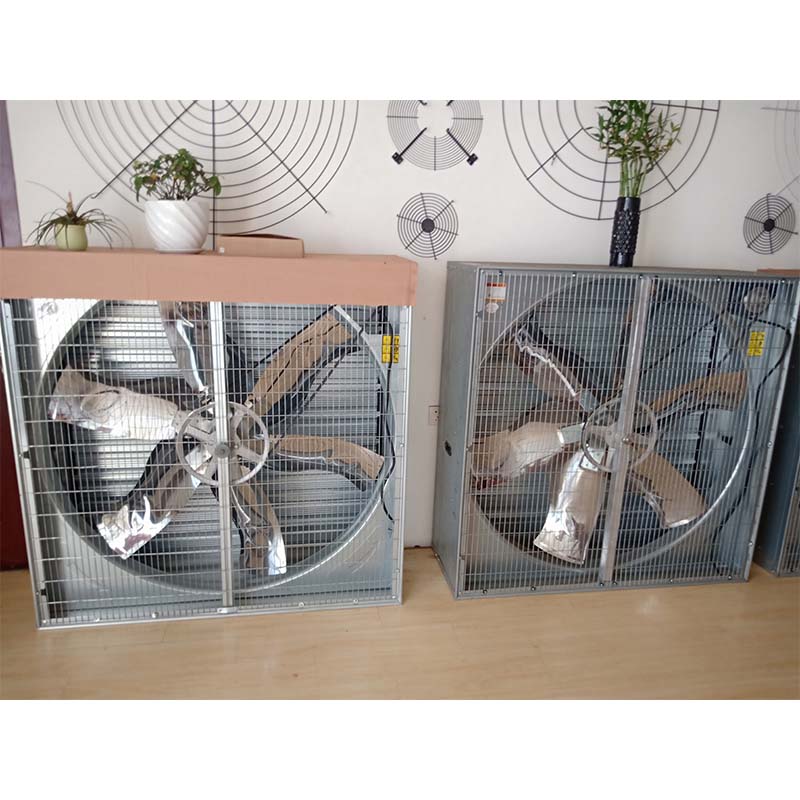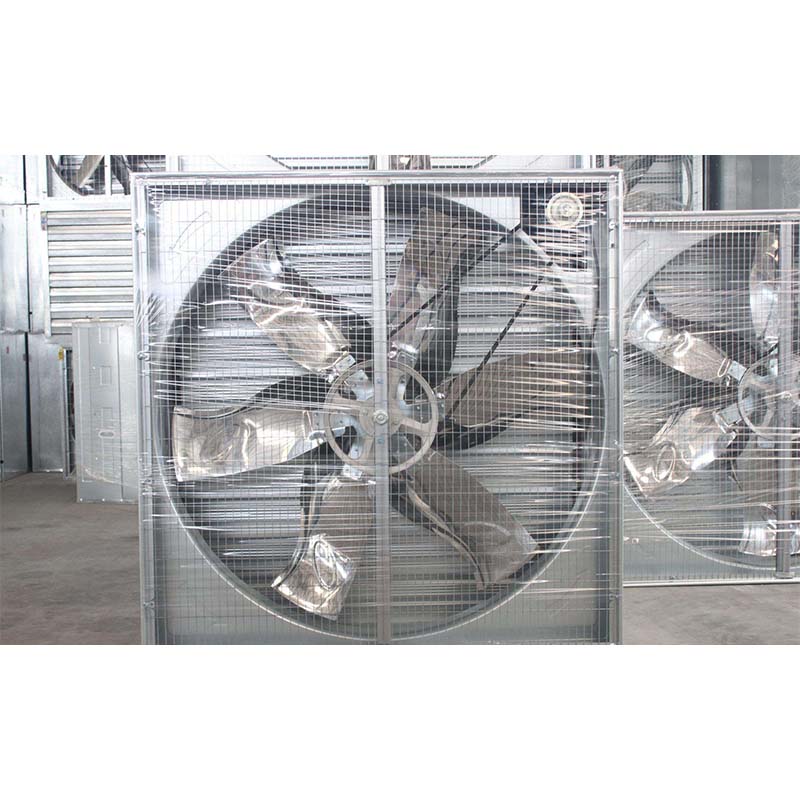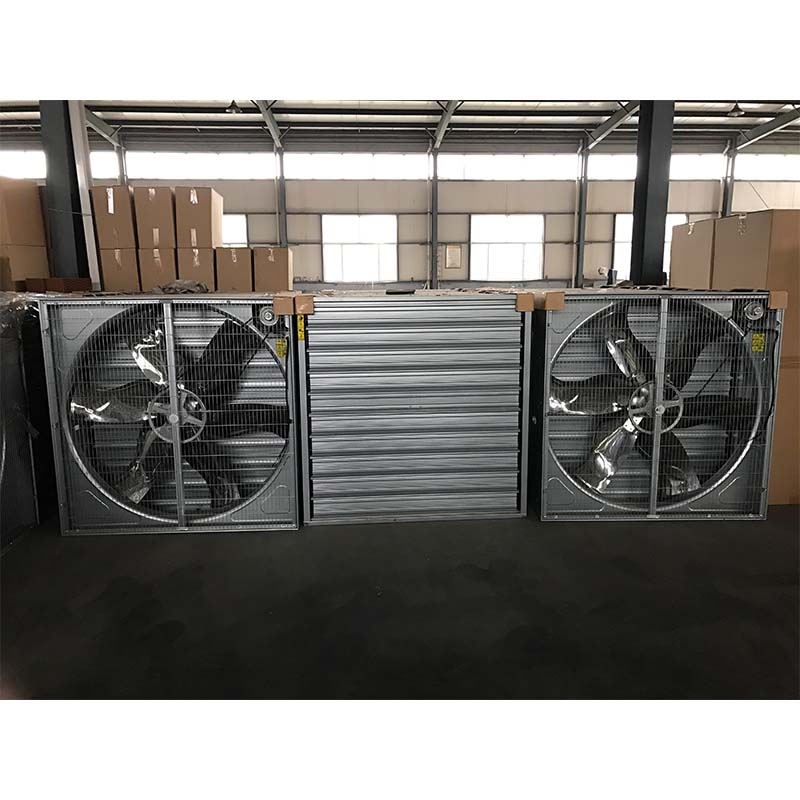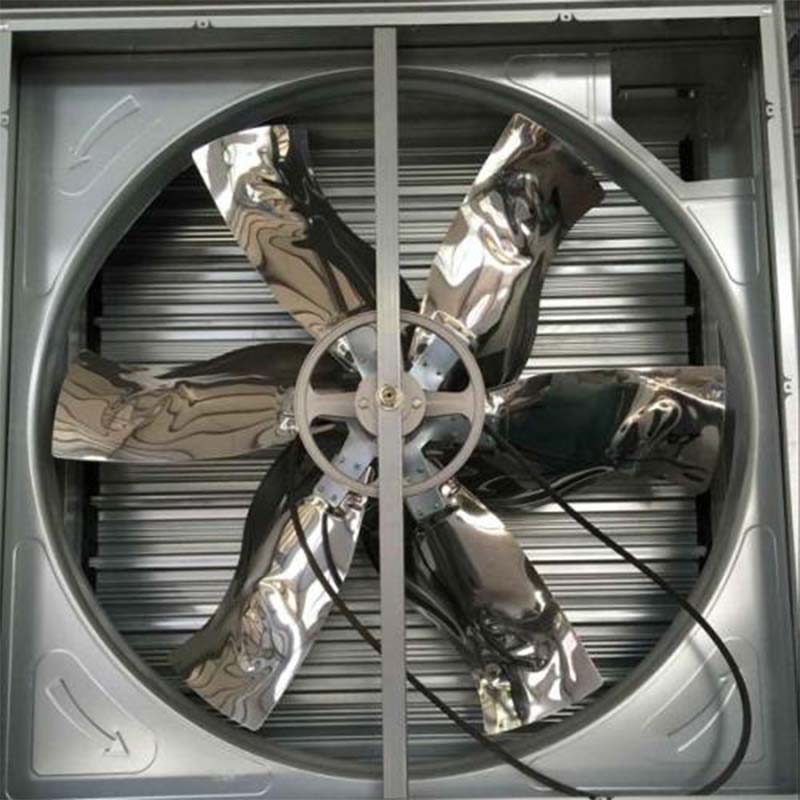Efficient Evaporative Cooling Pads | Greenhouse Solutions
Sep . 01, 2025 01:40 Back to list
Efficient Evaporative Cooling Pads | Greenhouse Solutions
Understanding the Modern evaporative cooling pad Technology
In industrial and agricultural sectors, especially within controlled environments like greenhouses and large-scale poultry farms, maintaining optimal temperature and humidity is critical for operational efficiency and productivity. The evaporative cooling pad stands as a cornerstone technology for achieving this, offering an energy-efficient and environmentally conscious solution for air conditioning and ventilation. This section delves into the fundamental principles and the evolving landscape of this essential component.
An evaporative cooling pad works on the principle of adiabatic cooling, where sensible heat in the air is converted into latent heat by evaporating water. As warm, dry air passes through the water-saturated pad, water molecules absorb heat from the air, causing the water to evaporate and the air temperature to drop. This simple yet highly effective mechanism makes these pads indispensable for various applications requiring precise climate control without the exorbitant energy costs associated with traditional refrigeration.
The demand for efficient, sustainable cooling solutions continues to grow, driven by rising energy costs and stricter environmental regulations. This has spurred significant advancements in evaporative cooling pad design, materials, and overall system integration, making them more robust, durable, and performant across a wider range of climatic conditions. Suppliers are increasingly focusing on specialized pads tailored for specific needs, ensuring maximum efficiency and longevity.

Industry Trends and Market Dynamics for Evaporative Cooling Pad Suppliers
The market for evaporative cooling pad technology is characterized by several dynamic trends. A major driver is the increasing global emphasis on energy efficiency and sustainability. Businesses are seeking cooling solutions that reduce operational expenditures and minimize carbon footprint, making evaporative systems highly attractive. The rise of controlled environment agriculture (CEA), particularly greenhouse evaporative cooling pads, is another significant factor.
- Greenhouse Sector Growth: As global food demand rises and climate change impacts traditional farming, greenhouses offer a controlled environment for year-round crop production. Effective cooling systems using evaporative cooling pads for greenhouse applications are crucial for preventing heat stress and optimizing plant growth.
- Sustainable Technology Adoption: There's a clear shift towards products that align with green building initiatives and renewable energy strategies. Modern pads are designed for minimal water consumption and maximum cooling efficiency, often integrating with smart control systems.
- Material Innovation: Advancements in cellulose paper treatment and alternative materials (e.g., fiberglass, specialized polymers) are leading to pads with enhanced durability, resistance to algae and bacteria, and improved fire retardancy.
- Customization Demand: As applications become more specialized, there's a growing need for tailored solutions in terms of pad dimensions, thickness, flute angles, and specific impregnation treatments. This pushes evaporative cooling pad suppliers to offer more flexible manufacturing capabilities.
Market analysis indicates a steady growth rate in the evaporative cooling market, projected to reach substantial valuation by 2030, driven predominantly by the HVAC and agricultural sectors. The increasing adoption of poultry farms and livestock facilities also contributes significantly, where consistent temperature is vital for animal welfare and productivity.
Detailed Manufacturing Process of an Evaporative Cooling Pad
The creation of a high-performance evaporative cooling pad involves a meticulous multi-stage process, ensuring durability, efficiency, and longevity. Unlike metal components, these pads are primarily made from specially treated cellulose paper or fibrous materials.
Key Materials and Pre-Treatment:
- Raw Material: High-quality, long-fiber virgin kraft paper (typically 120-150 gsm) is the primary base, known for its high absorbency and structural integrity. Some specialized pads use fiberglass or other synthetic fibers for specific chemical resistance or fire ratings.
- Resin Impregnation: The paper undergoes impregnation with thermosetting phenolic resins. This crucial step provides rigidity, strength, and resistance to degradation from water, UV light, and biological growth (algae, bacteria). Anti-rot, anti-fungal, and fire-retardant additives are often incorporated during this stage.
Manufacturing Process Steps:
- Corrugation and Fluting: The resin-impregnated paper is fed into specialized machinery that creates precise corrugated channels. These channels are engineered with specific flute angles (e.g., 45x15 degrees or 45x45 degrees) and heights to maximize the wetted surface area while minimizing air pressure drop. The corrugation is critical for creating the intricate structure that facilitates efficient evaporation.
- Curing: The corrugated sheets are then subjected to a curing process, often involving heat and pressure. This polymerizes the phenolic resin, permanently bonding the fibers and giving the pad its structural rigidity and water resistance.
- Layering and Bonding: Multiple corrugated sheets are stacked and bonded together, typically using a high-strength adhesive, forming a robust block. The alternating flute angles ensure that the air flow is turbulent and uniformly distributed across the pad, enhancing evaporative efficiency.
- Sizing and Cutting: The large bonded blocks are precisely cut into specific dimensions (height, width, thickness) using automated saws. This ensures consistent product sizes for various cooling systems and frames. Tolerances are typically tight, adhering to international standards like ISO 9001 for quality management.
- Edge Sealing (Optional): For enhanced durability and to prevent water bypass, some pads may undergo edge sealing processes, often with specialized coatings.
- Quality Control and Testing: Each batch undergoes rigorous testing. This includes tests for material density, water absorption rate, dry pressure drop, wet pressure drop, saturation efficiency, and resistance to biological degradation. Compliance with standards such as ISO 9001 for manufacturing quality and CE marking for European market access are common benchmarks.
 (0,0,0,0.1);">
(0,0,0,0.1);">
Target Industries and Advantages:
While initially conceived for agricultural applications, the versatility of the evaporative cooling pad has expanded its reach:
- Greenhouses: Essential for temperature and humidity control, crucial for crop yield and quality.
- Poultry and Livestock Farms: Maintains comfortable conditions for animals, reducing heat stress and improving productivity.
- Industrial Ventilation: Used in factories, workshops, and warehouses to cool large spaces, improving worker comfort and preventing equipment overheating.
- Commercial Buildings: Supplemental cooling in areas like large retail spaces or data centers.
The primary advantages include significant energy savings (up to 75% compared to compressor-based cooling), corrosion resistance due to material treatment, long service life (typically 5-7 years with proper maintenance), and a very low environmental impact.
Technical Specifications and Performance Parameters of Evaporative Cooling Pads
Understanding the technical specifications of an evaporative cooling pad is paramount for selecting the right component for a given application. These parameters directly influence the system's overall cooling capacity and efficiency.
Key Parameters and Their Significance:
- Pad Thickness (mm): Common thicknesses are 100mm, 150mm, and 200mm. Thicker pads generally offer higher saturation efficiency but also result in greater pressure drop across the pad.
- Flute Angle (degrees): Typically 45x15 or 45x45. This refers to the angle of the corrugations. Optimal flute angles maximize the wetted surface area for evaporation while allowing for efficient airflow.
- Saturation Efficiency (%): This measures how effectively the pad cools the air, expressed as the percentage of the dry-bulb temperature reduction towards the wet-bulb temperature. High-quality pads achieve 80-95% efficiency.
- Air Velocity (m/s or fpm): The optimal speed at which air passes through the pad. Exceeding this can lead to water carry-over and reduced efficiency; too low, and cooling capacity is diminished. Typical range: 1.0-2.5 m/s.
- Pressure Drop (Pa or In.W.C.): The resistance to airflow exerted by the pad. A lower pressure drop indicates better airflow characteristics, reducing fan power consumption.
- Water Consumption (L/hr/m²): The rate at which water is consumed by evaporation. Efficient pads balance cooling with minimal water wastage.
- Service Life (Years): Varies based on material quality, water purity, and maintenance, typically 5-7 years for high-grade cellulose pads.
Typical Product Specification Table:
These specifications allow engineers and facility managers to accurately size and integrate evaporative cooling pads into their ventilation systems, ensuring optimal performance and energy efficiency for their specific climate control needs.
Application Scenarios and Case Studies
The versatility of the evaporative cooling pad makes it suitable for a diverse range of applications, predominantly in sectors requiring precise temperature and humidity control.
1. Greenhouse Environmental Control:
For greenhouse evaporative cooling pads, maintaining a stable internal climate is paramount for crop health and yield. During hot seasons, temperatures can quickly soar, causing plant stress, reduced photosynthesis, and increased water demand. An integrated greenhouse ventilation cooling system utilizes evaporative cooling pads for greenhouse operations alongside exhaust fans to create a uniform flow of cool, humid air.
Case Study: Large-Scale Tomato Greenhouse, Southern California
- Challenge: Maintaining optimal 22-28°C temperatures and 60-70% RH in a 5-acre greenhouse under external temperatures often exceeding 38°C (100°F).
- Solution: Installation of a robust greenhouse ventilation cooling system featuring 150mm thick evaporative cooling pads along one wall, paired with high-volume exhaust fans on the opposite wall.
- Outcome: Consistent internal temperatures were maintained within ±2°C of the target, even during peak summer. This led to a documented 15% increase in yield and a 20% reduction in plant mortality rates due to heat stress, with energy costs significantly lower than traditional refrigeration.

2. Poultry and Livestock Facilities:
Heat stress in poultry and livestock can severely impact growth rates, egg production, and overall animal health. Evaporative cooling pads provide an excellent solution for large barns and sheds, maintaining a comfortable environment.
Case Study: Broiler Farm, Texas, USA
- Challenge: Mitigating heat stress for 50,000 broiler chickens in a climate with prolonged periods of high temperatures and humidity, which caused reduced feed intake and increased mortality.
- Solution: Implementation of a tunnel ventilation system featuring robust evaporative cooling pads across the entire intake side, coupled with high-capacity fans.
- Outcome: Reduced average barn temperature by 8-10°C during hot periods. This led to a 7% improvement in feed conversion ratio and a 50% decrease in heat-related mortality, showcasing the direct economic benefits of effective cooling.
3. Industrial and Commercial Cooling:
From manufacturing plants to large warehouses, cooling vast indoor spaces can be energy-intensive. Evaporative cooling pads offer an economical alternative.
Case Study: Automotive Assembly Plant, Mexico
- Challenge: Providing comfort cooling for over 500 workers in a 10,000 m² assembly hall where machinery generated significant heat, pushing ambient temperatures above 35°C. Traditional AC was deemed too expensive to operate.
- Solution: Design and installation of a comprehensive evaporative cooling system utilizing large banks of 200mm thick evaporative cooling pads at strategic air intake points, integrated with high-volume industrial fans.
- Outcome: Achieved an average indoor temperature reduction of 6-8°C, drastically improving worker comfort and reducing instances of heat-related fatigue. Energy consumption for cooling was reduced by an estimated 60% compared to equivalent mechanical refrigeration, leading to rapid ROI.

Technical Advantages and Vendor Comparison
The inherent technical advantages of evaporative cooling pads make them a preferred choice for many B2B applications, especially when compared to alternative cooling methods. When selecting an evaporative cooling pad supplier, a thorough comparison is essential.
Technical Advantages:
- Superior Energy Efficiency: Evaporative cooling consumes significantly less electricity compared to compressor-based refrigeration systems (up to 75% less), as it primarily uses power for fans and a water pump.
- Eco-Friendly Operation: It uses water as the refrigerant and avoids harmful synthetic refrigerants (CFCs/HCFCs), making it environmentally sustainable.
- Cost-Effectiveness: Lower initial investment and significantly reduced operating costs contribute to a faster return on investment.
- Humidity Control: Naturally adds humidity to the air, which can be beneficial in arid climates or for specific agricultural needs (e.g., maintaining optimal greenhouse humidity).
- Fresh Air Delivery: Systems continuously introduce fresh, filtered outdoor air, improving indoor air quality, unlike recirculating HVAC systems.
- Low Maintenance: With proper water treatment and periodic cleaning, evaporative cooling pads require minimal maintenance.
- Corrosion Resistance & Durability: Advanced resin treatments and material composition ensure resistance to water, UV, and biological growth, extending service life.
Vendor Comparison – Key Differentiators:
Choosing among evaporative cooling pad suppliers requires evaluating several factors beyond just price.
Reliable evaporative cooling pad suppliers will not only offer high-quality products but also provide comprehensive technical support, robust warranties, and proven track records in various industries.

Customized Solutions and Partner Clients
The diverse needs of various industries necessitate tailored cooling solutions. Reputable evaporative cooling pad suppliers offer extensive customization options to meet specific project requirements, from unique dimensions to specialized material treatments.
Customization Capabilities:
- Dimensions: Pads can be custom-cut to any height, width, and thickness (e.g., 50mm to 300mm) to fit existing or custom cooling system frames.
- Flute Angles and Configurations: While 45x15 and 45x45 are standard, specific airflow and pressure drop requirements may call for optimized flute geometries.
- Material Treatments: Enhanced treatments for fire retardancy, UV stability, increased antimicrobial resistance, or specific chemical compatibility are available. For example, pads for coastal regions might require higher salt resistance.
- Frame Materials: While the core is the pad, the surrounding framework (stainless steel, aluminum, PVC) can also be customized for durability and specific environmental conditions.
Our commitment to delivering optimal performance is reflected in our ability to provide bespoke solutions that integrate seamlessly into complex B2B systems. We work closely with clients from initial consultation through design and implementation, ensuring every aspect of the evaporative cooling pad system meets stringent operational demands.
Authoritative References and Partner Clients:
Our products adhere to internationally recognized quality and performance standards. We are ISO 9001 certified, ensuring rigorous quality management across all manufacturing processes. Our pads often carry CE certification, affirming compliance with European safety, health, and environmental protection requirements.
With decades of experience in the field, we have cultivated long-term partnerships with leading companies across various sectors, including:
- Large-scale Commercial Greenhouse Operators
- Industrial HVAC System Integrators
- Poultry and Livestock Farm Developers
- Manufacturers requiring process cooling or facility ventilation
- Data Center Developers for supplementary cooling solutions
Our strong client relationships and documented success stories underscore our authority and trustworthiness as a premier evaporative cooling pad supplier.
Trustworthiness: FAQs, Lead Time, Warranty, and Support
Building trust with B2B clients goes beyond product quality; it encompasses clear communication, reliable logistics, and comprehensive after-sales support. We prioritize transparency and customer satisfaction.
Frequently Asked Questions (FAQs):
Q: What is the typical service life of your evaporative cooling pads?
A: With proper maintenance and water quality, our high-quality cellulose pads typically last 5 to 7 years. In optimal conditions, some clients report even longer lifespans.
Q: How often do I need to replace the evaporative cooling pad?
A: Replacement frequency depends on water quality, environmental conditions, and maintenance. Regular inspection (every 6-12 months) helps determine the best time for replacement, often indicated by reduced cooling efficiency or visible degradation.
Q: Are your pads resistant to algae and bacteria?
A: Yes, our pads are impregnated with advanced antimicrobial and anti-algae agents during manufacturing to inhibit biological growth and extend pad life. However, regular cleaning and proper water treatment are still crucial for optimal performance.
Q: Can your greenhouse evaporative cooling pads withstand harsh weather conditions?
A: Our pads are designed for durability. The robust construction and resin treatment provide resistance to UV exposure and common environmental stressors. For extremely harsh conditions, we offer specialized treatments and framing options.
Lead Time and Fulfillment:
We understand the importance of timely delivery for your project schedules. Standard orders for common evaporative cooling pad dimensions typically have a lead time of 2-4 weeks. For custom specifications or large volume orders, lead times will be provided upon quotation and order confirmation, with dedicated project managers overseeing logistics to ensure efficient fulfillment. Expedited options may be available depending on manufacturing capacity.
Warranty Commitments:
We stand behind the quality of our evaporative cooling pads. All products come with a standard 1-year limited warranty against manufacturing defects and material failures under normal operating conditions. Extended warranty options are available for specific projects or high-volume contracts. Details of the warranty policy are provided with every quotation.
Customer Support and After-Sales Service:
Our commitment to our clients extends far beyond the sale. We offer comprehensive customer support, including:
- Technical Consultation: Expert advice for system design, pad selection, and optimization.
- Installation Guidance: Detailed manuals and, where applicable, remote support for proper installation.
- Maintenance Protocols: Best practices for cleaning, water treatment, and troubleshooting to maximize pad lifespan.
- Dedicated Account Management: A single point of contact for all your inquiries and support needs.
For immediate assistance, please contact our support team via phone or email, detailed on our corporate website. We are committed to ensuring your greenhouse ventilation cooling system operates at peak efficiency.
Conclusion
The evaporative cooling pad is a proven, efficient, and sustainable technology that continues to evolve to meet the demanding climate control requirements of modern agriculture and industry. From optimizing crop yields in greenhouse evaporative cooling pads to ensuring animal welfare in large livestock facilities and improving industrial working conditions, these pads offer a compelling solution for energy-efficient cooling.
By understanding the detailed manufacturing processes, technical specifications, and the advantages offered by leading evaporative cooling pad suppliers, businesses can make informed decisions that drive operational efficiency, reduce costs, and support environmental sustainability. Investing in high-quality evaporative cooling solutions is not just a purchase; it's a strategic move towards a more productive and responsible future.
References:
- ASHRAE Handbook - HVAC Systems and Equipment, Chapter 15: Evaporative Coolers.
- Kloppenburg, T. (2018). Evaporative Cooling Systems for Greenhouses: Design and Performance. HortTechnology, 28(2), 177-184.
- Renewable Energy Laboratory (NREL) - Evaporative Cooling.
- ISO 9001:2015 - Quality management systems - Requirements.
- European Committee for Standardization (CEN) - CE Marking Directives.
-
Evisceration Table - Hygienic, Stainless Steel, Easy-Clean
NewsNov.17,2025
-
Chicken Plucker and Scalder | Fast, Stainless, Adjustable
NewsNov.17,2025
-
Silo Solutions: Durable, Automated, Batching-Ready Storage
NewsNov.17,2025
-
Automatic Drinking Line for Poultry | Precise & Durable
NewsNov.17,2025
-
Cutting Machine for Meat & Bone | High-Precision, Safe
NewsNov.17,2025
-
Chicken Feet Peeling Machine | Fast, Hygienic, High-Yield
NewsNov.10,2025






